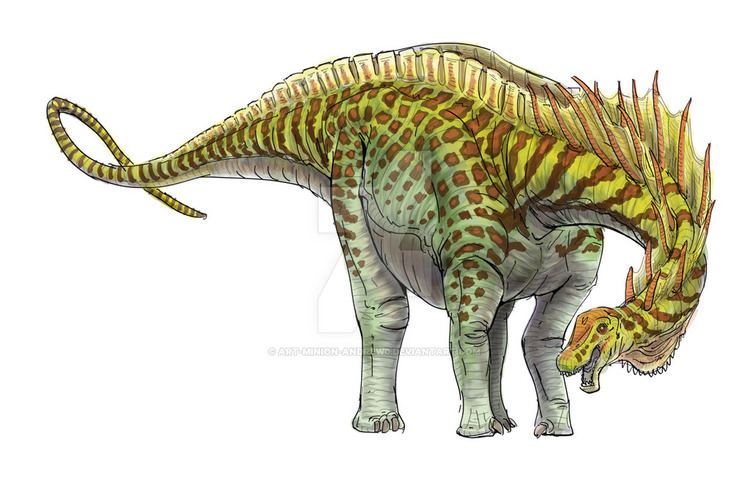
General
The Amargosaurus is a small sauropod from Patagonia. Its unique appearance has led to many depictions over the years, and has captured the minds of children everywhere. Appearing all over the internet and other media, it isn’t quite as famous as it’s bigger cousin the Brachiosaurus, but is still relatively known among the public. The usage of its most interesting features, the spines on its back still remains elusive to this day.
Characteristics
Amargosaurus has many distinctive features, its most famous and defining characteristic being its row of elongated spines that run down its neck. Rather than being spikes, these were directly attached to the neck. Another distinctive characteristic is that Amargosaurus wasn’t much taller than three meters, a size that surprises many. Its short neck as well as smaller size means it was closer related to the Diplodocus than to the Brachiosaurus.
| Genus: | Amargosaurus |
| Meaning: | “La Amarga lizard” |
| Discovered: | Patagonia |
| Class: | Sauropod |
| Size: | 10 Meters long, 2.7 Meters tall. |
| Paleo Rating: | 36/42 |
| References: | Info taken from: Amargasaurus – Wikipedia Image from: Andrew Minniear – Facts and Pictures (newdinosaurs.com) |
Did you know?
Amargosaurus is known from a single nearly perfectly complete skeleton, missing only part of the skull, which is common among sauropods.
Interesting Facts
- Its spines have many proposed uses, ranging from defensive weaponry to sails to moderate heat or attract mates. While some evidence exists for some theories, there is no consensus or solid proof for any usage. Could they be decorative? Perhaps, yet the very nature of them being attached directly to the spine in the way they are points to a more important usage.
- The Amargosaurus’s neck may have been unable to spin or turn to some positions, thanks to the row of spines.
- The Amargosaurus may have been quicker than initially thought, thanks to some similarities between its legs and modern bison legs, which are built for galloping.
